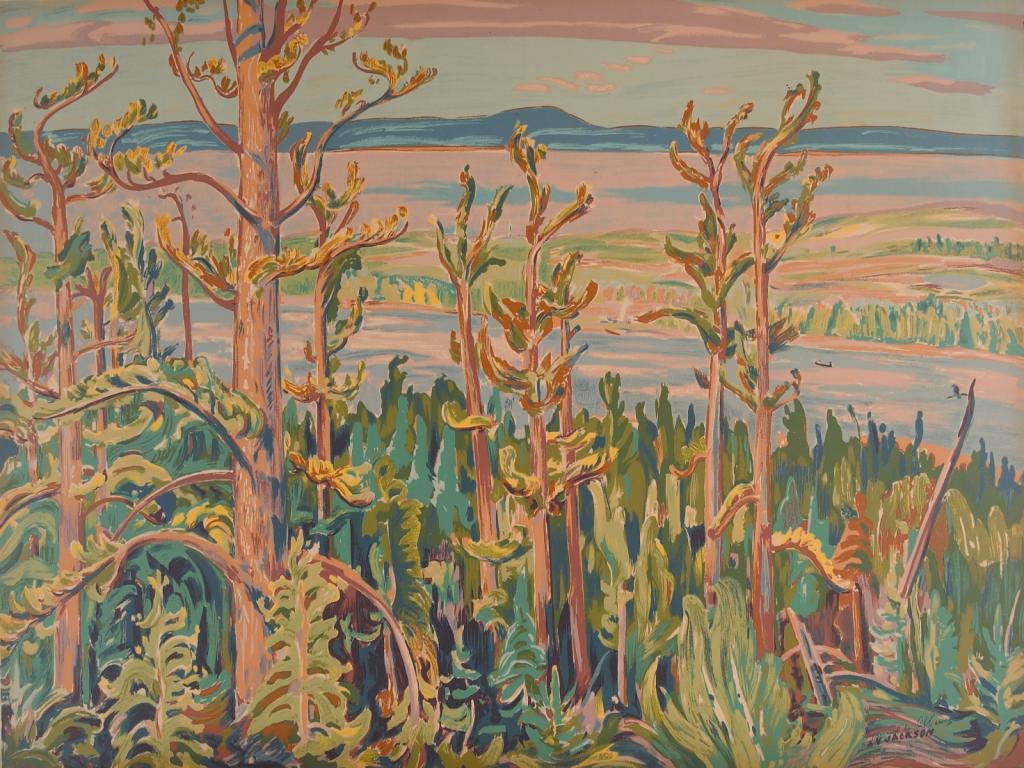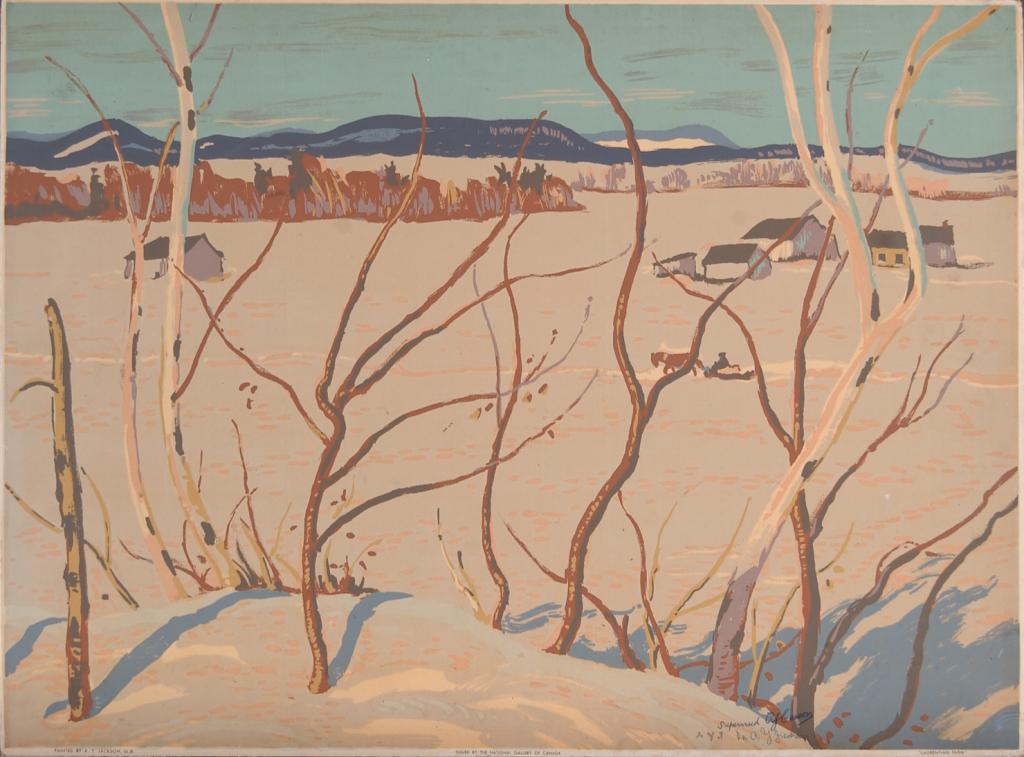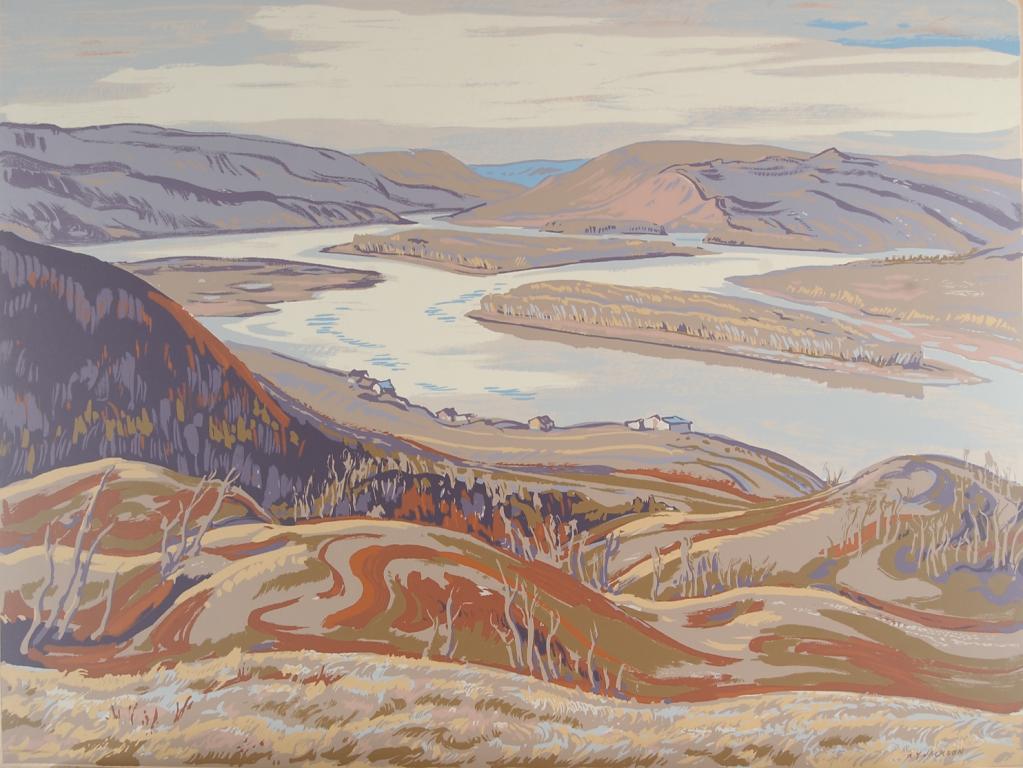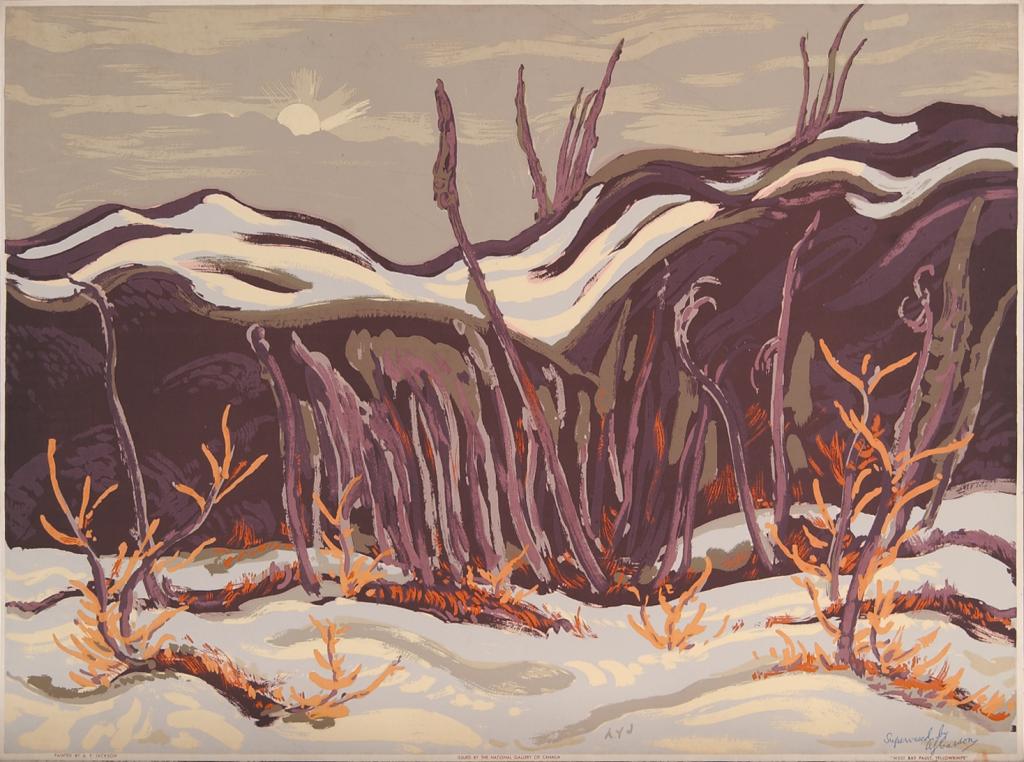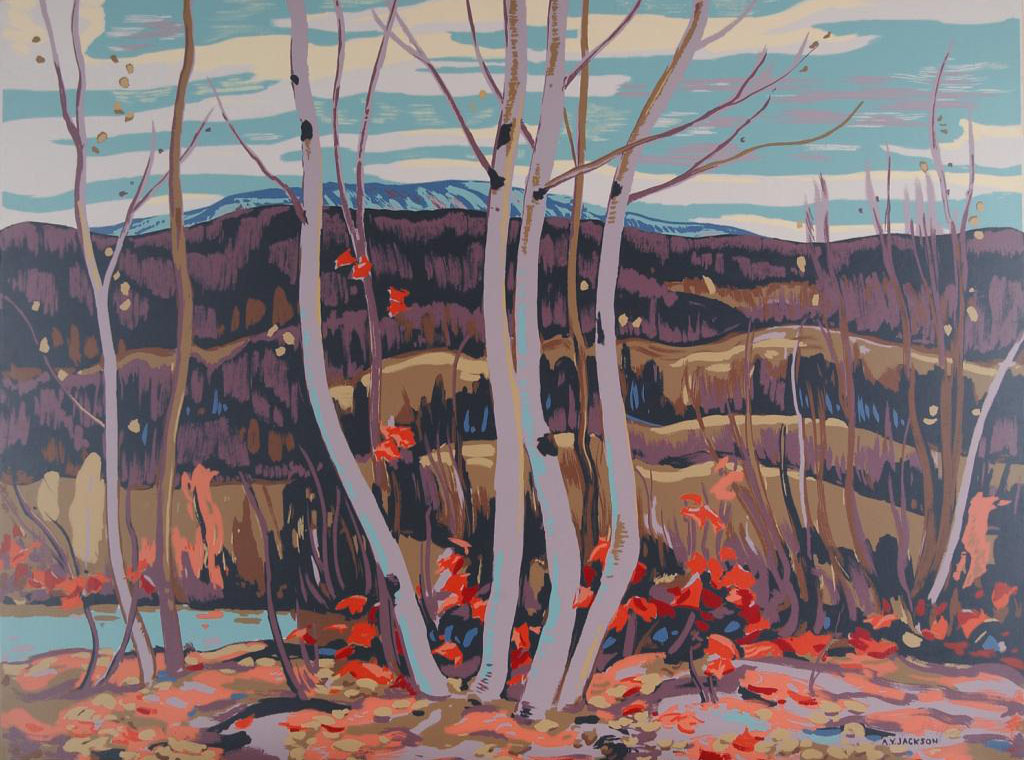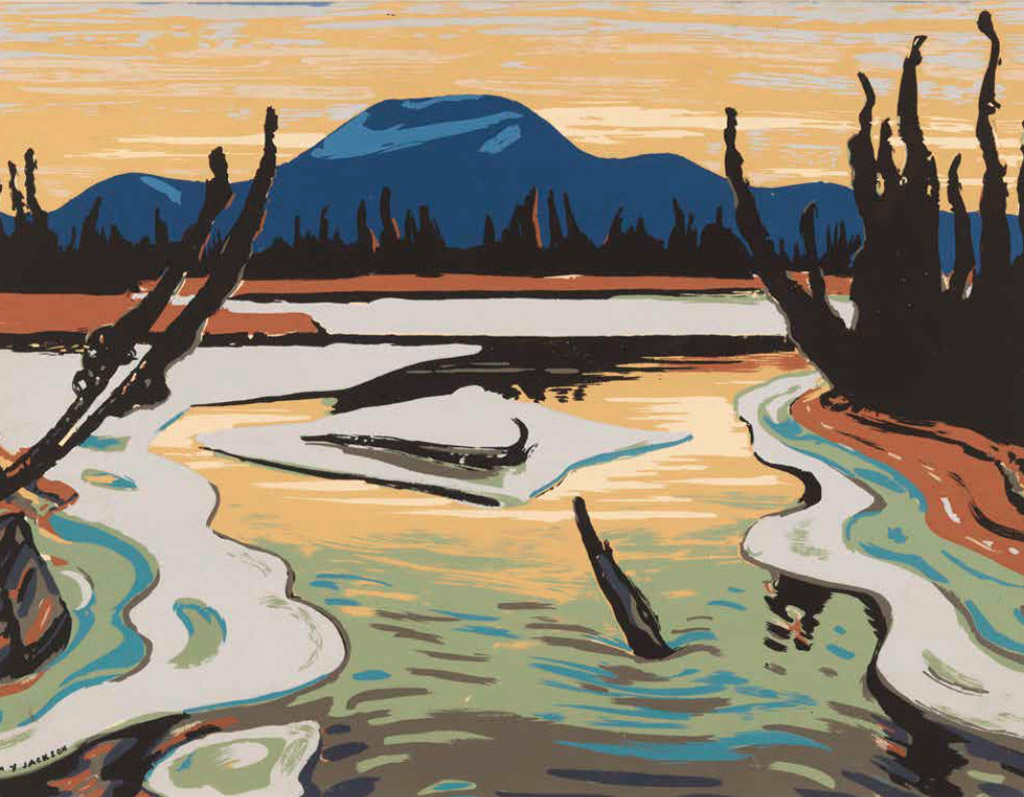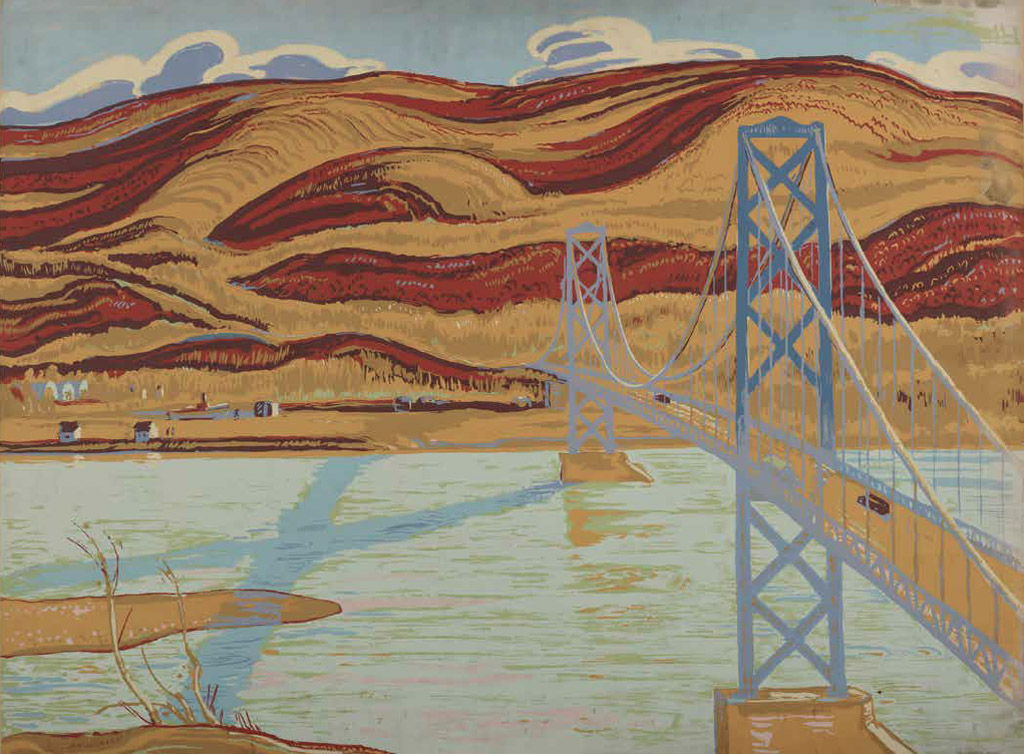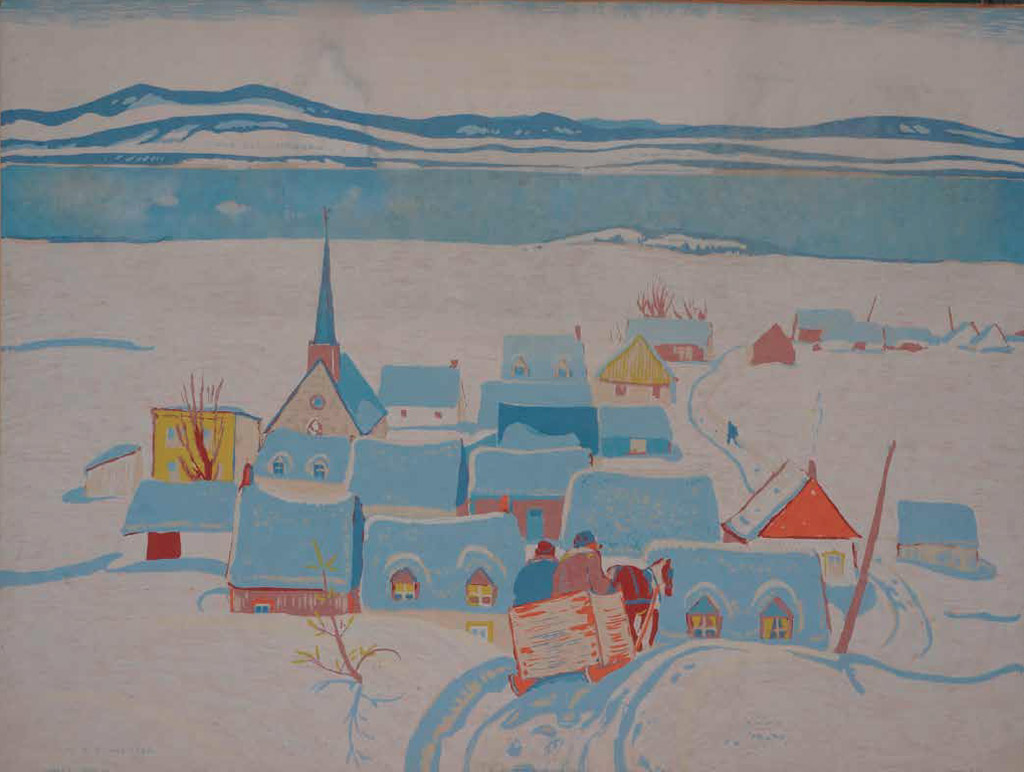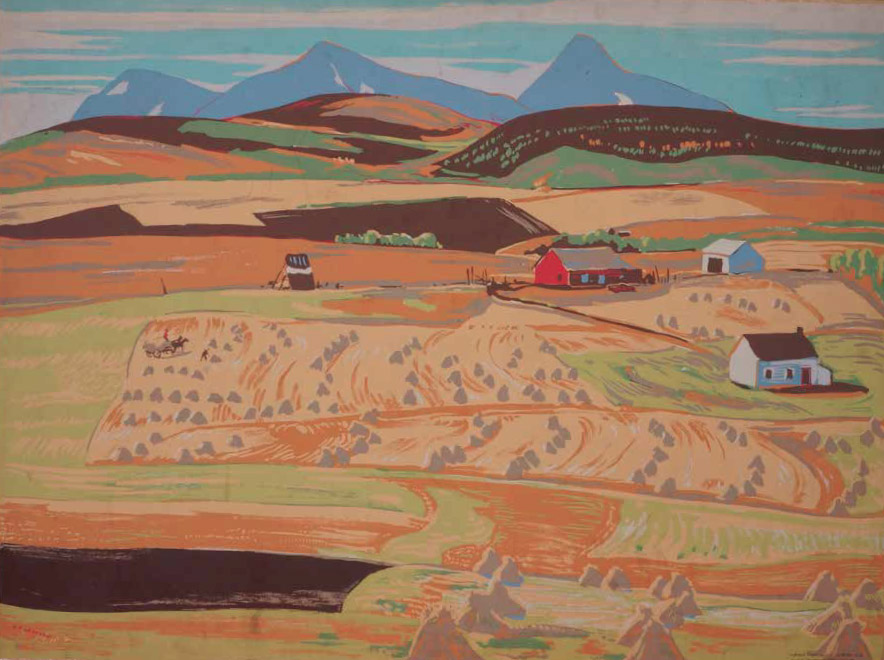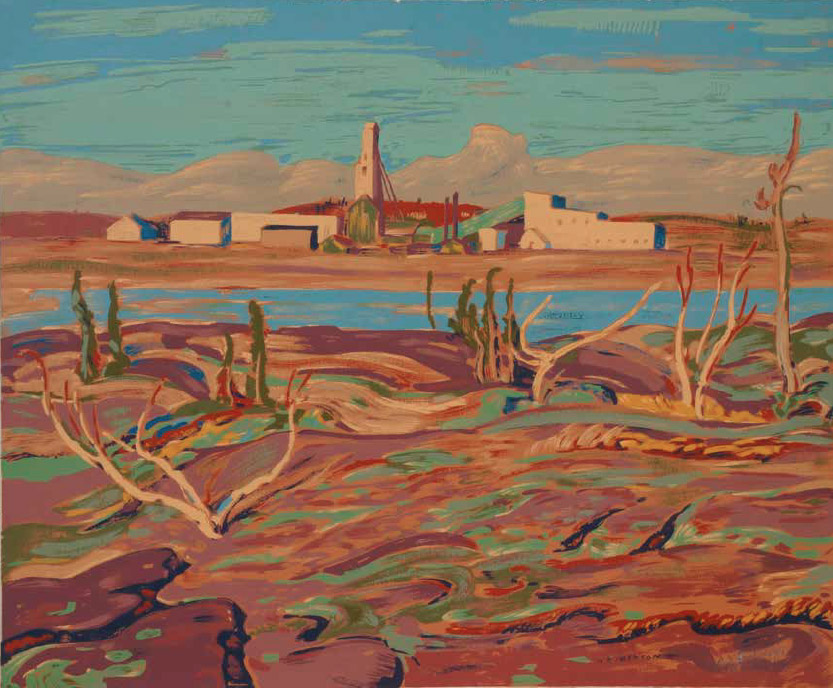Canadian artist Alexander Young Jackson (A. Y. as he liked to be called), a founding and leading member of the Group of Seven, was recognized during his lifetime for his contribution to the development of art in Canada. He travelled widely and painted full-time, primarily landscapes.
A native of Montreal, Jackson studied with William Brymner at the Art Association of Montreal, at the Art Institute of Chicago in 1906, and with Jean-Paul Laurens at the Académie Julien in Paris in 1907. He painted in Europe frequently between 1906 and 1912.
It was his painting ‘The Edge of Maple Wood’ that brought him to the attention of J.E.H. MacDonald. When it was bought by Lawren Harris, Jackson visited Toronto and met other members of the future Group of Seven. Dr. James MacCallum, co-financier with Harris of Canada’s first purpose-built studio building, sponsored him for a year in 1914. Jackson lived and worked at the Studio Building in Toronto until 1955. He travelled in Canada throughout his career, sketching outdoors and painting in his Toronto studio.
Jackson’s father, an unsuccessful businessman, abandoned his family in 1891, so Jackson began work as a twelve-year-old at a Montreal lithography company. He moved to Toronto, and in 1914 shared a studio with Tom Thomson and painted in Algonquin Park. His painting trips sparked an artistic awakening for Jackson.
During the first World War he joined the infantry, serving as an official War Artist from 1917 to 1919. He exhibited with the Group of Seven from 1920 and played a key role in bringing the artists of Montreal and Toronto together. Continuing to play an influential role in Canadian art, Jackson taught at the Banff School of Fine Arts from 1943 to 1949. He resided in Manotick, near Ottawa, from 1955, but was incapacitated by a stroke in 1968 and moved to Kleinburg, Ontario, where he lived from 1969 until his passing.
There is a beauty in the winter landscape, a vibrancy of colour that you have to look for to observe with the eyes of an artist. In ‘West Bay Fault, Yellowknife’, Jackson reminds us of that. Between the snow-covered foreground and the distant grey sky lies dark brooding snow covered hills, a perfect backdrop to observe the golden twigs and grey lavender of bare branches. Jackson’s ability to capture this mood in paint was one of his greatest gifts.
The Jack Pine is one of a Jackson’s best subjects – nature in its seemingly unlimited chaotic patterns, a small window into a woven wood of color and life, with vast distance and long spans of time to traverse. ‘Jack Pine’ was commissioned to be specifically printed for the Trees of Canada series by Sampson-Matthews in 1950, paid for by the Canadian Pulp and Paper Association. The image represents the trees of the untouched Northern Canadian landscape. By the time Jackson had reached this mature period in his career, he had become a master, and in this highly finished graphic painting he did not disappoint.
In ‘Laurentian Farm’, Jackson gives us a view through bare branches of a snow covered farm landscape, woodlot and hills in the distance under a clear blue winter sky. Cold as it may be, the strong sun casts heavy shadow and one can feel the sunny warmth.
‘Meeting of the Rivers’ is a dynamic swirling landscape at the onset of winter before the snows arrive, taking the eyes over the undulating landscape, on a course through the islands to the distant barren hills before launching them into the clouds. One observes the small group of buildings along the river. An isolated community, as many are, in the vast nation that is Canada. The settlers come and go but the landscape always remains.
Jackson was a member of the Royal Canadian Academy, the Ontario Society of Artists, and the Canadian Group of Painters. He received numerous honours and is represented in important public collections including: the Art Gallery of Ontario; Hart House at the University of Toronto; the Leningrad Art Gallery, U.S.S.R.; the Montreal Museum of Fine Arts; the National Gallery of Canada; the Musée de la Province de Québec; the Seagram Collection; the Tate Gallery, London, England; the Vancouver Art Gallery; the Winnipeg Art Gallery and The McMichael Conservation Collection in Kleinburg, Ontario.
“The obedient in art are always the forgotten… The country is glorious but its beauties are unknown, and but waiting for a real live artist to splash them onto canvas.” – A.Y. Jackson
